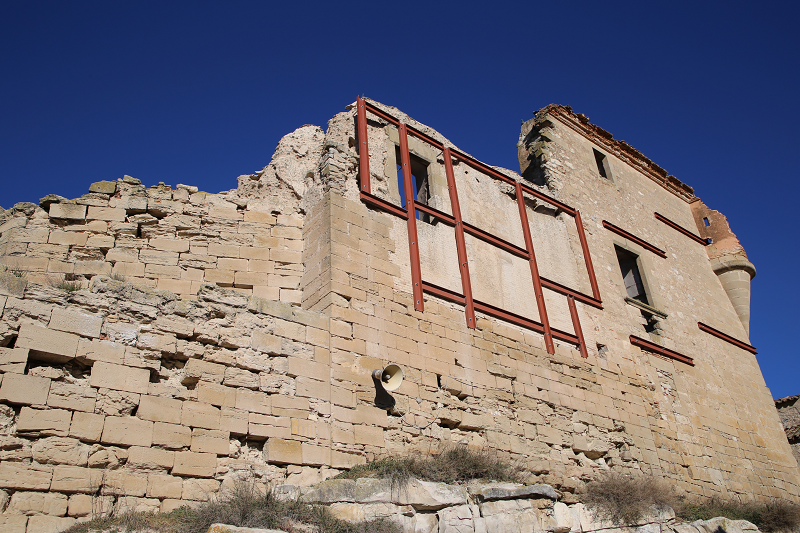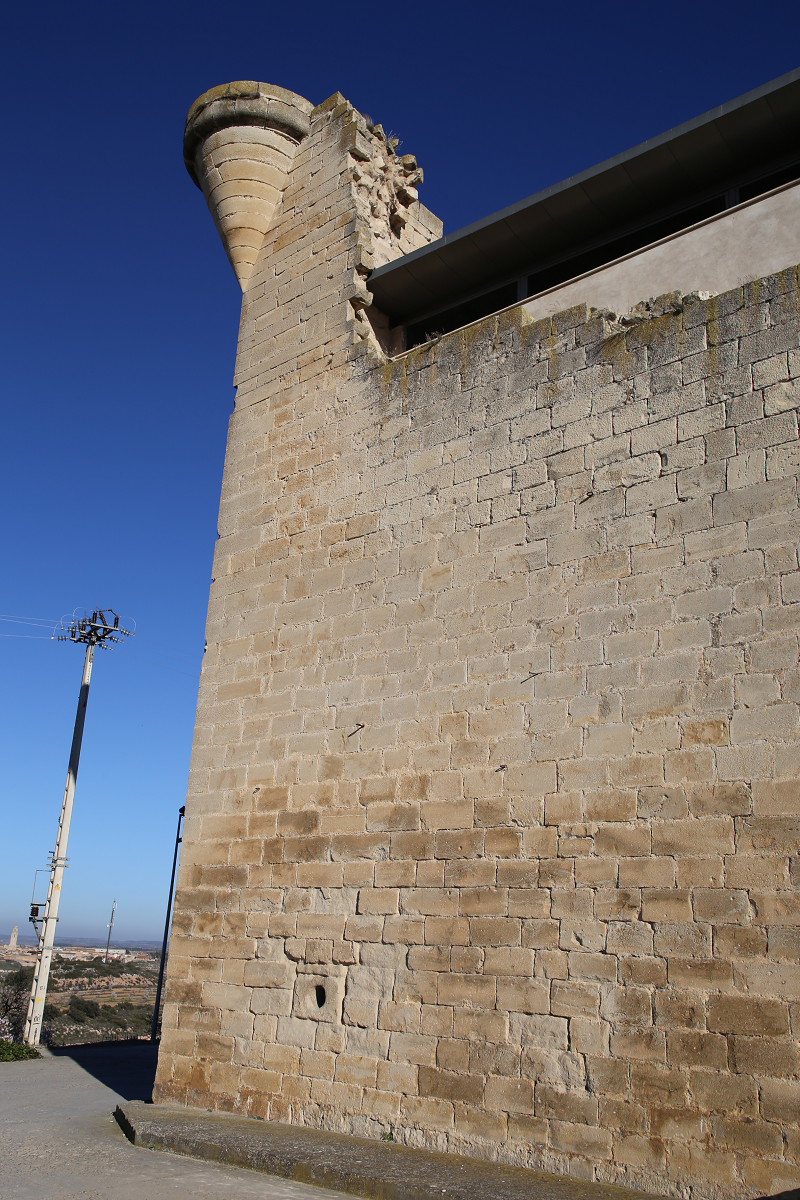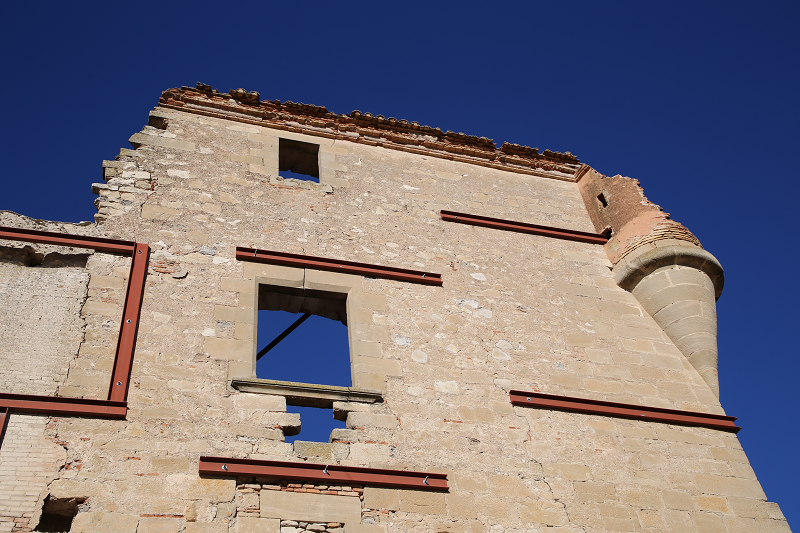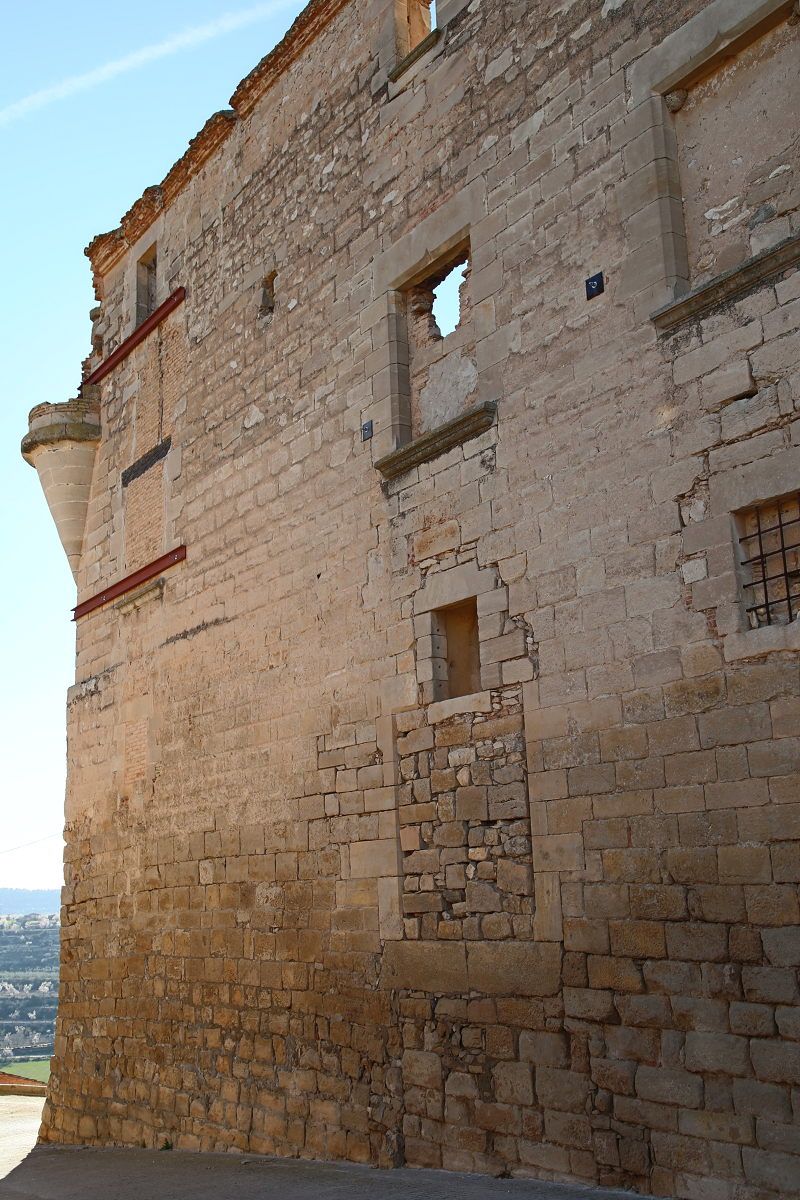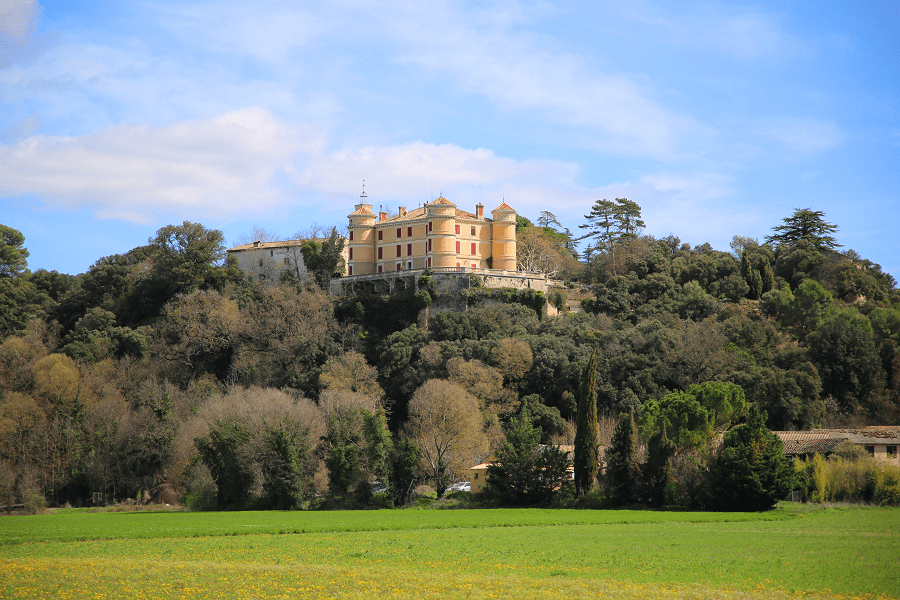The Castle of Maldà (cat. El Castell de Maldà) is a building in Maldà (Urgell), Lleida province, Catalonia, Spain, declared a cultural asset of national interest. It is the symbol and main monument of the town and one of the best-known castles in the region.
It is a large palace castle, modified in the 13th century, enlarged in the 15th century and transformed into a palace in 1682. The walls up to the height of the roof are preserved. It was damaged by the Carlists in 1833.
The primitive castle of Maldà was located in the buildings that surround the Torre square, throughout the 12th, 13th and 14th centuries.
The castle was reformed according to the inscription of the central voussoir of the access portal to the castle, where it is read: ‘FILI / PUS IMCEPIT O / PERAM CASTR / GUILELMI CA / RDONE ANO DO / MINI MCCXII’
The translation tells us ‘Andreu Felip begins the work of the castle of Guillem de Cardona in the year of the Lord 1212’.
Currently, the preserved perimeter walls reveal a magnificent construction of opulent walls with the remains of the machicolation of vigilance and towers on the corners. It is a rectangular construction with a large asymmetrical patio. The oldest part of the building is formed by a rectangular room and a hall of irregular pentagonal floor plan with numerous embrasures, both located on the south side. This area was built in the 13th century as a complement to the main castle, which was built in the middle of the village and abandoned in the 12th century.
In the 15th century, the arcade room was built, recently restored as a multipurpose room, with seven diaphragm arches and nine meters high.
At first, the lower part of the castle served defensive and storage functions. On the first floor there was a large hall, three private rooms, the kitchen and a small pantry. Later the castle was considerably expanded. The reforms affected mainly the perimeter of the castle and the facilities that worked as pantry and cellar.
The first documental mention regarding the existence of this castle dates from 1082, and refers to the donation from the counts of Barcelona, the brothers Ramon and Berenguer and countess Mafalda to the viscount Ramon Folch de Cardona of the castle of Maldà and the castle of Maldanell. In 1249 the monarch’s visit to the castle of Maldà is documented. In 1350 the viscountess Beatriu d’Anglesola, the widow of Hug I de Cardona, arranged for long stays in this castle, which is thought to coincide with the works to enlarge the castle. Later in 1450, Pere de Cardona sold the castle to Bernat Albert, lord of Ponts.
Later, the Albert family resold the castle to Miquel Joan de Claramunt. From 1662 the notes of an inventory are preserved and years later in 1667 the castle was auctioned publicly and acquired by Jaume de Cartada i Sala, who promoted the construction of the square in front of the entrance to the castle. In 1833, a squad of Carlists set fire to the castle and let it burn until the main walls alone were left.
Five stages can be established in the evolution of the castle: 11th-12th centuries, construction of the old castle; 13th-14th centuries, construction of the new castle; 15th-16th centuries, transformation of the castle to the current shape; 17th-18th centuries, abandonment of the project, the castle left unfinished; 19th century until today, destruction and degradation of the monument.
At the beginning of the 21st century, Lord Alfons de Vilallonga i Serra is the current Baron of Maldà and Maldanell and he donates the building in exchange for participation in the Patronage of the Castle of Maldà, formed by several entities and collaborating personalities, among them the City Council of Maldà. At the moment, most of the Castle is being remodeled, although in a part where the works have already finished, acts are already being held. There is a proposal to make the Castle of Maldà a study center of the Valley of the Corb.



